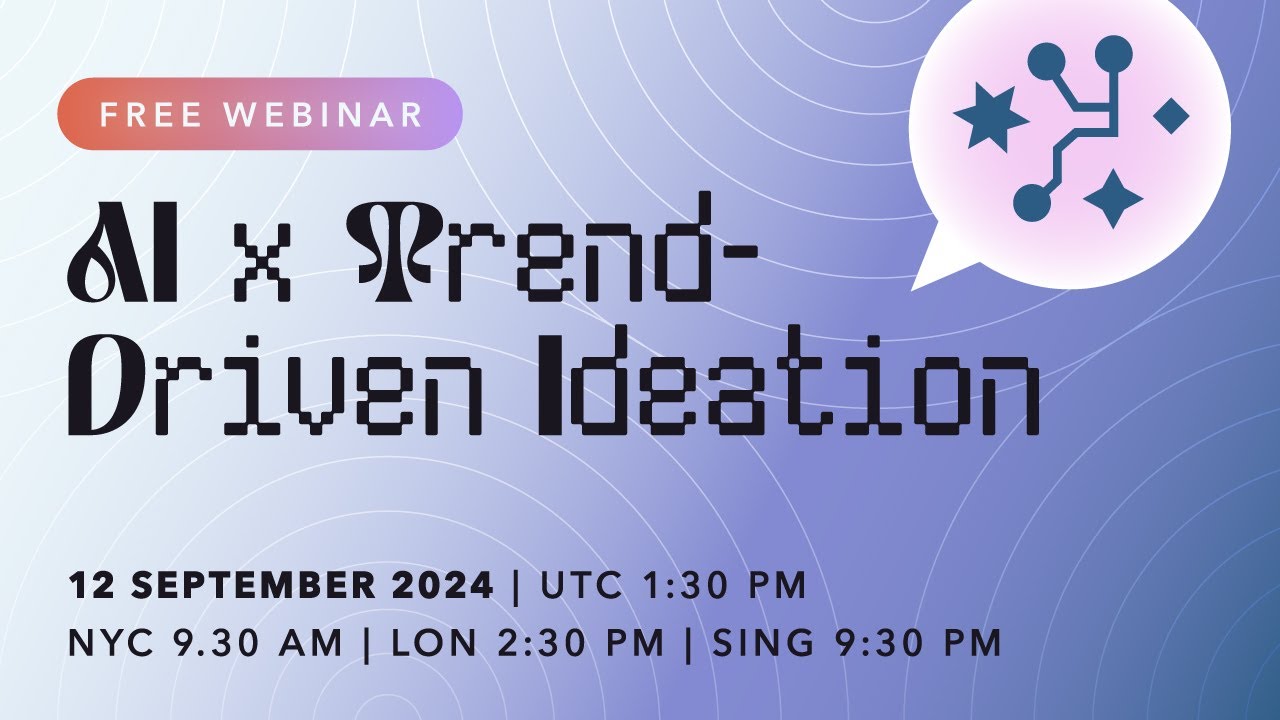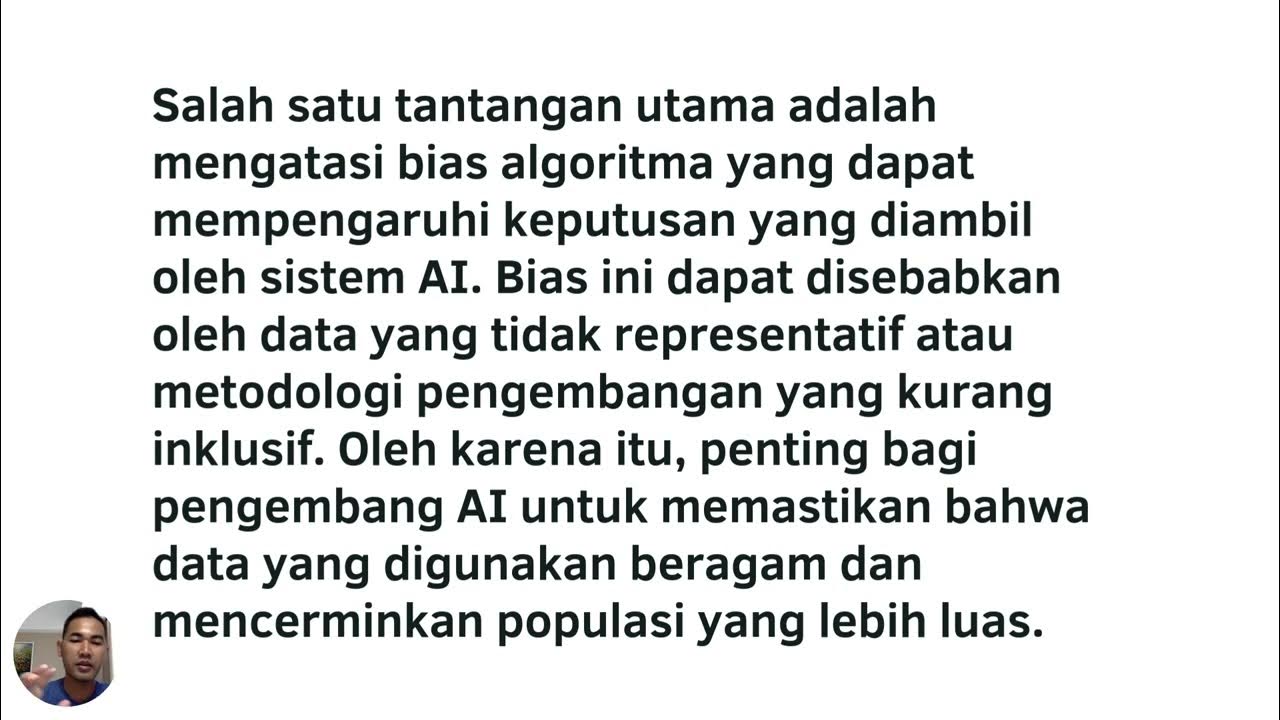Increasing AI Tool Adoption by Front-Line Workers
Summary
TLDRThe webinar, 'Increasing AI Tool Adoption by Front-Line Workers,' discusses the challenges of implementing AI in organizations due to resistance from end users. Experts Kate Kellogg, Mark Sendak, and Suresh Balu share research findings and tactics for successful AI integration, emphasizing the need to address user concerns about workflow and autonomy. They highlight the predictive, laborious, and prescriptive nature of AI and provide examples from various industries, including healthcare, to illustrate how these tactics can be applied effectively.
Takeaways
- 🎯 AI implementations often fall short due to end user resistance, as they perceive few benefits and increased workload.
- 🔍 Research by Kate Kellogg, Mark Sendak, and Suresh Balu found that addressing end users' concerns about workflow and autonomy can lead to AI tool adoption.
- 👥 Involving end users from the beginning is crucial for successful AI implementation, as they have unique insights and needs.
- 💡 AI solutions should not only make regular work faster and easier (the sundae) but also offer new capabilities (the cherry on top).
- 📈 To increase end user benefits, AI solutions must predict outcomes valuable to the user and reduce the labor involved in their tasks.
- 🛠️ Developers need to influence top managers to change the reward system to align with AI outcomes and user adoption.
- 📊 AI's laborious nature requires reducing the burden on end users, automating data input and pre-staging interfaces to meet their needs.
- 🔗 Integrating AI tools into existing workflows requires careful planning to ensure minimal disruption and seamless use.
- 🌟 Protecting end users' autonomy is key when implementing prescriptive AI, avoiding interference with core tasks they value.
- 📝 Measuring the impact of AI tactics involves assessing clinical outcomes, process efficiency, cost-effectiveness, and addressing health disparities.
Q & A
What is the main challenge faced by organizations in implementing AI tools?
-The main challenge is that end users often resist adopting AI tools, especially those guiding decision-making, as they see few benefits for themselves and the new tools may add to their workload and reduce their autonomy.
How can developers ensure that AI tools are more readily adopted by end users?
-Developers can ensure adoption by addressing end users' concerns about workflow and autonomy, reconciling conflicting stakeholder interests, and increasing the benefits for the end users.
What are the three ways AI is different from other technologies?
-AI is different because it is predictive, laborious, and prescriptive, which can result in few benefits, additional labor, and decreased autonomy for employees.
What are the six tactics identified for successfully implementing AI solutions?
-The six tactics are not explicitly mentioned in the transcript, but they revolve around increasing end user benefits, reducing labor, and protecting autonomy while addressing workflow and stakeholder concerns.
How can organizations measure the success of AI implementations?
-Success can be measured by increased revenue, reduced costs, improved product and service quality, and most importantly, by the adoption rate and the positive impact on the end users' workflow and autonomy.
What role do front-line workers play in the adoption of AI solutions?
-Front-line workers play a crucial role as they are the end users who interact directly with the AI tools. Their acceptance and proper use of these tools determine the success of AI implementations in achieving organizational goals.
How can AI solutions result in increased revenue and reduced costs for organizations?
-By improving product and service quality, AI solutions can lead to higher customer satisfaction and loyalty, resulting in increased revenue. Additionally, they can help optimize processes, reduce inefficiencies, and minimize waste, leading to reduced costs.
What is the significance of the 'ice cream sundae' analogy mentioned in the transcript?
-The 'ice cream sundae' analogy is used to illustrate the two-fold approach to AI solutions: the base (the sundae) represents the core functionality that makes regular work faster and easier, while the cherry on top represents the additional, innovative capabilities that AI can bring to a job.
What are some examples of industries where the six tactics for successful AI implementation can be applied?
-The transcript mentions examples from HR recruitment, sales, and fashion buying. These tactics are generalizable across industries, suggesting they could also be applied in healthcare, finance, marketing, and more.
How can developers address the issue of end users' resistance to AI tools?
-Developers can address resistance by involving end users from the beginning, understanding their needs and concerns, and designing AI tools that align with their workflow, provide clear benefits, and do not infringe on their autonomy.
What is the role of rewards and incentives in the adoption of AI tools?
-Rewards and incentives play a significant role as they can motivate end users to adopt AI tools. By tying rewards to outcomes that AI tools can improve, organizations can encourage end users to engage with and utilize the AI solutions effectively.
Outlines

This section is available to paid users only. Please upgrade to access this part.
Upgrade NowMindmap

This section is available to paid users only. Please upgrade to access this part.
Upgrade NowKeywords

This section is available to paid users only. Please upgrade to access this part.
Upgrade NowHighlights

This section is available to paid users only. Please upgrade to access this part.
Upgrade NowTranscripts

This section is available to paid users only. Please upgrade to access this part.
Upgrade NowBrowse More Related Video

AI × Trend-Driven Ideation | 12 September | TrendWatching

Copilot for Microsoft 365 – Game Changer or Risk Maker?

Etika dan Regulasi Penggunaan Kecerdasan Buatan AI Presentation

If artificial intelligence takes your job, AI should pay you, argues actor

How To Develop AI Apps 100% For FREE!

AI4E V3 Module 5
5.0 / 5 (0 votes)